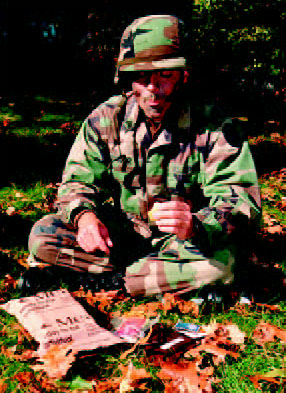|
Government and Industry Work Together
The Consumer's Role | More Information
 |
The September 11, 2001, terrorist attacks and subsequent anthrax outbreaks have raised security concerns among Americans. Some consumers have begun to ask questions about the safety of the nation’s food supply—especially about bioterrorism (intentionally contaminating the food or water supply). |
| Although America’s food supply is unquestionably one of the world’s safest, the U.S. Department of Health and Human Services recently stated that the risk of an attack is unknown. To reduce the threat of an attack, America’s food growers, food processors, and the federal government are working to enhance food security. Together—with the help of vigilant consumers—we will continue to enjoy a safe, secure, and abundant food supply. |
| Government and Industry Work Together |
|
Government agencies and the food industry have worked together to protect the nation’s food and water supply for years—long before the September 11 terrorist attacks upon America. |
 |
Government preparedness includes disease surveillance and outbreak response activities. The food industry has long addressed not only spoilage and contamination of foods, but also intentional tampering.
Following September 11, government and industry are reviewing food security and making further improvements. New programs are designed to increase security and strengthen coordination and communication of agencies in case of an emergency. Individual food companies are reviewing and updating their own security plans as well. The Food and Drug Administration (FDA) recently developed Food Security Preventive Measures Guidance to help food companies assess their security operations. |
|
Within days of the September 11 terrorist attacks, the National Food Processors Association (NFPA) formed the Alliance for Food Security, a partnership of nearly 100 agricultural, food industry, and government organizations. NFPA developed a Food Security Checklist for use by food processors and suppliers, which asks a series of important questions about food plant operations. The Association also developed a security and assessment planning guide for food companies. The guide uses what is called the Threat Exposure Assessment and Management (TEAM) process, which can be customized to any part of the food chain. |
|
The Consumer’s Role |
|
Consumers have control over the foods they choose. Always make sure food packages are intact before opening them. If the container is damaged, dented, torn, or appears to have been opened and resealed, dispose of it immediately. Also be alert for abnormal odor, taste, texture, and appearance.
It is important to follow food safety recommendations every day. Wash your hands and utensils before preparing foods. Since bacteria are spread through cross-contamination (when a raw food, or its juices, touches another food), always separate raw meat, poultry, and seafood from other foods. Cook foods thoroughly to kill harmful bacteria. Refrigeration keeps bacteria from multiplying: Keep your refrigerator at 40°F and your freezer at 0°F, and promptly refrigerate grocery items and leftovers.
In case of a disaster or emergency, you should have at least three days’ worth of food and water. Good food choices are shelf-stable processed foods (do not need refrigeration until opened) and foods that do not need heating. Every year, replace and replenish your emergency food and water. |
| More Information |
|
www.nfpa-food.org
(National Food Processors Association, NFPA)
www.safefood.org
(NFPA’s consumer website)
www.fda.gov
(FDA website with a link to bioterrorism)
www.bt.cdc.gov
(Centers for Disease Control and Prevention) Information on bioterrorism and preparedness. |
Developed by the National Food Processors Association • www.nfpa-food.org |

